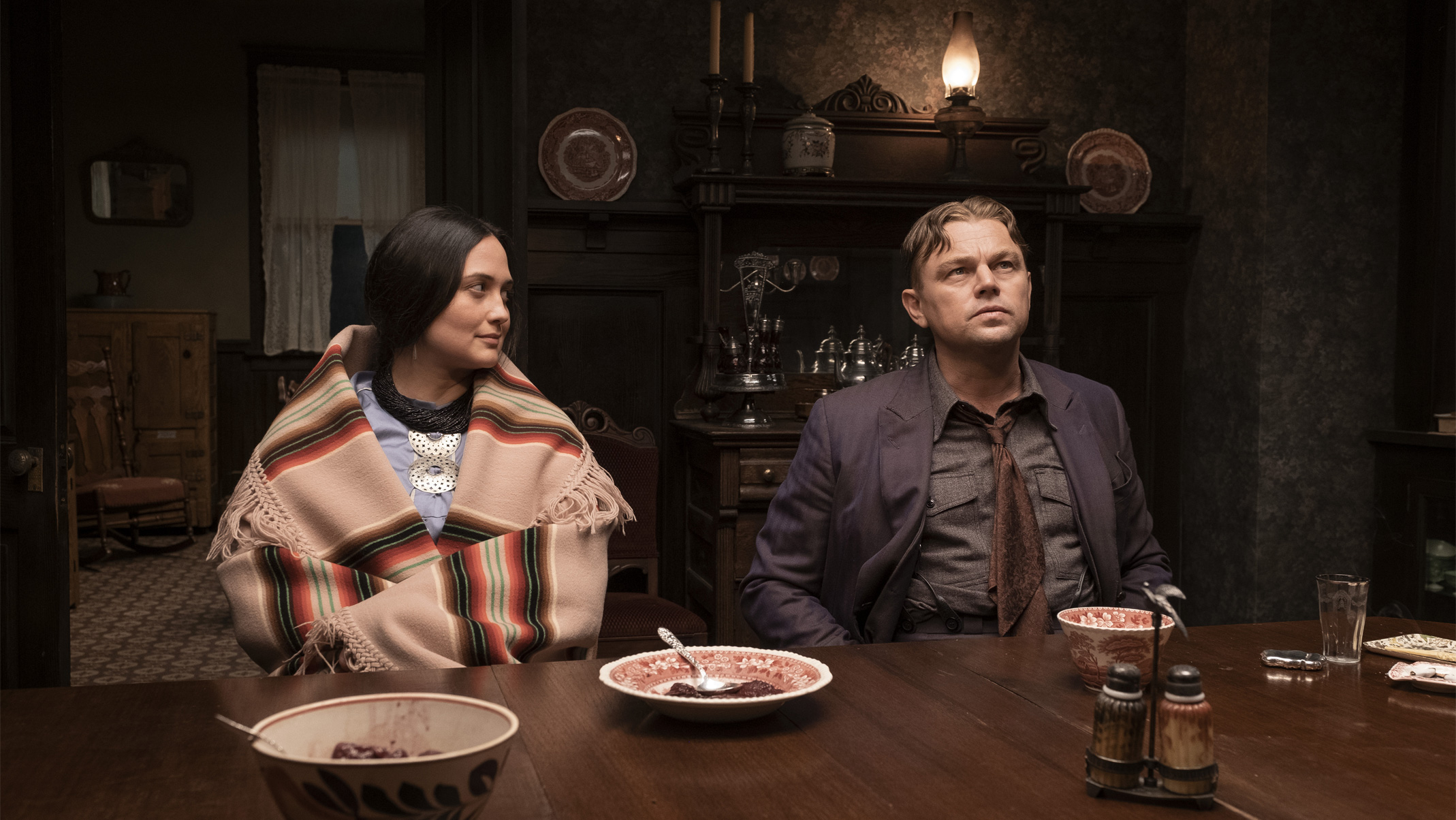Film Review: Killers of the Flower Moon (2023)

When I was a youngster just beginning to understand what made one movie better or worse than another, the films of Martin Scorsese were often a benchmark I held in high regard. My first experience with Scorsese was 1990’s Goodfellas, a film that began a long obsession with gangster pictures and the morally bankrupt individuals whose lives they were based on. I found myself both fascinated and repulsed by the ease with which these criminals could commit such heinous offenses toward others and then go on with their lives as if nothing had happened. How could someone so effortlessly destroy so many lives and then act as if they were entitled to do so all along? And, perhaps more importantly, how was Scorsese able to make me root for such men – these killers and psychopaths?
As I dove into Scorsese’s filmography over the next few years, I realized this wasn’t the first time he’d romanticized the cruelty of organized crime or the deeds of violent, troubled men, and it certainly wouldn’t be the last. In fact, I came to learn that his movies were dominated by these themes. His stylized and reverent approach to filmmaking, however, cleverly hid the fact that, often, he’d tricked me into identifying with characters I would no doubt vilify under different circumstances. Killers of the Flower Moon, however, takes a slightly different approach.
Taking place in Osage County, Oklahoma, in the 1920s, Scorsese’s latest film weaves a complicated tale of murder plots, land grabs, oil rights, and family law legalese into one hell of a western-themed crime saga, but when you boil it down to its basic parts, there’s just one thing on its mind: the murderous continuation of Manifest Destiny. This cornerstone of American exceptionalism is both infuriating and fascinating to watch, as it exemplifies and amplifies America’s historic and continued reliance on the resources and labor of those deemed “lesser” in the eyes of the capitalist class. As William Hale (Robert De Niro), Ernest Burkhart (Leonardo DiCaprio), and others perpetrate their “Reign of Terror” on the Osage people, it becomes clear that, despite the letter of the law, wealthy white men can do whatever they want to anyone who gets in the way of their own personal financial progress, something that Scorsese emphasizes by including reports of the Tulsa massacre that happened not far away and at the same time as the Osage murders.
As with Goodfellas and other Scorsese films, bad men drive the story forward, but unlike those films, we’re not meant to identify with them or the murder and theft they perpetrate for their own gain. In their ineptitude, a certain pity may surface, but the entitlement that accompanies their villainy makes even this a stretch for anyone who carries a decent heart somewhere in their body. Scorsese, however, doesn’t make his monsters completely inhuman either. They are not an “other” to be wiped from existence. They are men with free will who, despite being capable of love and being loved, decide of their own accord that wealth, land, and power trump any feelings they may have for their extended families. Does this cause some of them a certain amount of pain? It does, but not enough to stop them from carrying out their murderous orders. With free will comes a feeling of guilt, something some of Scorsese’s villains feel more than others.
At the center of the story are Burkhart and his Osage wife Mollie (an exceptionally powerful Lily Gladstone), whose family is one of the wealthiest in the state because of the sizable chunk of oil-rich land they own. Through a calculated and devious series of shootings, bombings, poisonings, and arranged marriages, this fertile land and the oil rights that go with it are being swindled into the hands of Hale, who firmly believes that he is entitled to them based on nothing more than his perceived superiority to the Osage. De Niro is at the top of his game here, as he plays Hale not as one of Scorsese’s usual hot-headed gangsters but as a duplicitous and politicking snake with no fear of repercussions.
DiCaprio isn’t far behind as Burkhart, Hale’s nephew and unwitting pawn. Finding some level of sympathy for Burkhart isn’t out of the question considering his medium intelligence and his uncle’s considerably persuasive demeanor, but this easily goes out the window as we watch Mollie’s health slowly fade under mysterious circumstances. And it’s this dynamic that gives Killers of the Flower Moon much of its weight. Seeing DiCaprio’s face as he silently justifies his uncle’s orders against the well-being of his wife and children, along with anyone else who gets in the way, is a haunting experience surpassed only by the sheer intensity of Gladstone’s show-stealing performance. This is a cast that can deliver, and they do so with gusto.
Killers of the Flower Moon does not glorify crime, as past Scorsese works have. Instead, it exposes the very attitudes that continue to lead to our nation’s disgraceful acceptance of both historical and contemporary crimes perpetrated under the guise of progress and capitalism. If you know anything about American history, Killers of the Flower Moon should not shock you, but as a decent human being, I can’t help but be shocked anyway.

